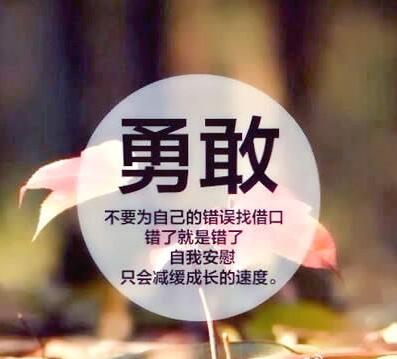
导游词的特点是什么。
如果是你想实际应用的话,很简单,就是让别人知道你在说什么,小孩都能懂你的意思。
那就是好的导游词做题的话就这么写:导游词的作用是:宣传景点,引导游客观光游览。
一篇好的导游词,要让人有身临其境的奇妙感觉,这就要求语言做到:强调知识性、讲究口语化、突出趣味性。
关于青藏地区的导游词(包含自然环境特征,语言富有吸引力)
拉萨又称“日光城”,中华人民共和国西藏自治区首府,西藏第一大城市,国家历史文化名城,她作为西藏自治区首府,长期以来就是西藏政治、经济、文化、宗教的中心,是一座具有1300年历史的古城。
位于西藏自治区东南部,雅鲁藏布江支流拉萨河北岸,地理坐标为东经91°06′,北纬29°36′海拔3650多米。
东邻林芝地区,南与山南地区交界,西连日喀则地区,北接那曲地区。
南北最大纵距202千米,东西最大横距277千米。
总面积29518平方千米。
总人口57.61万人。
1951年5月23日,西藏和平解放,拉萨城进入了新的时代。
1960年,国务院正式批准拉萨为地级市,1982年又将其定为首批公布的24座国家历史文化名城之一。
【市名来源】“拉萨”,藏语翻译为口头语言“是”,做事只需敬顺佛圣旨意,如理即化,亦表示精确,不容置疑与改变,差之毫厘,失之千里。
是通“寺”与“侍”。
此地以佛寺立城,故名拉萨市。
“拉萨”在藏语中为“圣地”或“佛地”之意,长期以来就是西藏政治、经济、文化、宗教的中心,金碧辉煌、雄伟壮丽的布达拉宫,是至高无上政教合一政权的象征。
早在七世纪,松赞干布兼并邻近部落、统一西藏后,松赞干布就从雅隆迁都逻姿(即今拉萨),建立吐蕃王朝。
拉萨古称“惹萨”,藏语“山羊”称“惹”,“土”称“萨”,相传七世纪唐朝文成公主嫁到吐蕃时,这里还是一片荒草沙滩,后为建造大昭寺和小昭寺用山羊背土填卧塘,寺庙建好后,传教僧人和前来朝佛的人增多,围绕大昭寺周围便先后建起了不少旅店和居民房屋,形成了以大昭寺为中心的旧城区雏形。
同时松赞干布又在红山扩建宫室(即今布达拉宫),于是,拉萨河谷平原上宫殿陆续兴建,显赫中外的高原名城从此形成。
“惹萨”也逐渐变成了人们心中的“圣地”,成为当时西藏宗教、政治、经济、文化的中心。
在一般人的印象中,拉萨是由布达拉宫、八廓街(八角街)、大昭寺、色拉寺、哲蚌寺以及拉萨河构成的,但西藏人认为,严格意义上的“拉萨”应是指大昭寺和围绕大昭寺而建立起来的八廓街,只有到了大昭寺和八廓街,才算到了真正的拉萨。
如今拉萨城东一带尚保持着古城拉萨的精髓。
目的论对导游词英译的启示
目的论对导游词英译的启示 【摘要】本文试图从功能派翻译理论的角度,结合翻译策略和原则,探讨“目的论”对导游词翻译的指导意义。
本文从导游词的特点出发,对其文本类别、表达策略和方法进行了分析,提出了以归化为主,异化为辅的翻译原则,以求能更好地传播中国文化,促进我国旅游行业的发展。
【关键词】导游词目的论翻译原则和策略 一、导游词文本功能及翻译特点 导游词是一种比较特殊的文本,指的是导游通过口头讲给外国旅游者听的文本。
随着入境旅游蓬勃发展,导游词也变得丰富多彩,不但内容精彩,表达方式也是变幻莫测。
但是,一篇好的导游词一般都包括了内容充实、生动有趣、真实可信、实用性强、文化性强、启迪受益、幽默风趣等要素。
由于主要是通过口头传播,所以导游词还具有随感性、随机性和鼓动性。
换言之,即它具有较强的主观性。
从文本的类型来看,一般导游词是信息型、表情型和指导型的结合体。
但也有一些导游词还具有优美的文学色彩。
所以,它还可以是一种文学体裁文本。
导游词可分为三类:预制类、现编类和预制现编类。
本文着重要讨论的是预制类文本。
二、目的论在导游词翻译中的应用 我们认为,若原文内容阻碍了译文诱导功能的发挥,译者可以对某些原文信息进行删减,甚至忽略不计。
原文的表达,对中国游客而言,已经用绘声绘色的语言,成功的勾起了游客的食欲和兴致。
然而如何让外国游客也有相同感受呢
译文中刻意删
谁能写一篇关于三峡的导游词啊 250字左右啊 急急急谢谢了
非常感谢你的这次导游服务,我们玩得很开心,你也辛苦了,这几天能看出来你都是非常尽心尽力得在为我们服务,你的讲解也非常的有趣,希望下次来还是由你来接待我们。
导游跟翻译,学习考证的过程分别是怎样的?如题 谢谢了
考4门理论 导游实物 导游基础 政策法规 汉语言文学 和现场讲解导游词 导游词自己提前背好 要理论和现场都过了才能考起
西安历史博物馆导游词 英文
我是找了相关资料,然后在在线翻译上翻过来的,没有时间能够细细帮你修改,要是用的成的话,还是找个好英语的帮你修改一下费力啊,哈哈,希望能帮上忙
Shaanxi History Museum is a state-level large-scale modernization of the museum is a magnificent Tang-style building, covers an area of about 70,000 square meters, construction area of over 50,000 square meters. It brings together the culture of Shaanxi, shows the development of Chinese civilization, Shaanxi Province in China in view of the history of the status of the state to invest a total of 144,000,000 yuan for the construction of the Shaanxi Museum of History, in June 1991 completion and opening. Flavor Architecture Museum, unique. It classical Chinese palace architecture and garden architecture closely together, coordinating colors, reflecting the traditional Chinese architectural style, at the same time with local characteristics and the spirit of the times. Museum of Shaanxi Province unearthed antiques 113,000 (Group) showroom area of 1100 square meters, at the prehistoric, Zhou, Qin, Han, Wei, Jin and Southern and Northern Dynasties and the Sui and Tang Dynasties, Song, Yuan, Ming and Qing Dynasties most of the seven, the image display system from 115 Million years ago until the year 1840, Shaanxi's history. In Chinese history, there have been 11 dynasties established their capitals in Shaanxi Province and will last for 1,000 years, is the capital of China's most Dynasty, the longest of the capital region, from a certain point, the ancient history of Shaanxi is China's history Enrichment. ● features: Museum of Shaanxi Province in ancient China into the palace courtyard with the architectural style in one, dignified and elegant, generous simplicity, the layout of coordination, the great momentum, reflecting the ethnic and local characteristics, the Library has central air-conditioning, lighting systems, multi-purpose use Computer management system and the central control system. Heritage and the Treasury have modern languages with simultaneous interpretation function Hall. ● Shaanxi Museum of History of the Tang Dynasty architectural style succession of powerful broad, dignified and elegant style, from traditional Chinese palace axis of symmetry, the master-slave in an orderly manner, the central hall, Si Yu Chong-floor, the layout of the form and at the same time the use of modern advanced technology to China's Sheng Tang period classical architectural style with modern requirements of the museum features combined into one, has managed to maintain the old style with modern features. The roof of the Tang Dynasty used the prevalence of gray green glazed tile, Wah Kwai appears to be a solemn, simple person, wall materials like asbestos tiles,Doors and windows are tinted using large pieces of glass and aluminum framework, the Library can be equipped with temperature and humidity control of the closed central air-conditioning system of multi-functional lighting systems, automatic fire alarm systems, computer-controlled management system; heritage with science and technology center With-the-art laboratory to test repair techniques and means of protection. To enhance cultural exchange between China, has computer-controlled and have 300,000 books in the library and 6-language simultaneous interpretation of international academic Hall. In addition, there are facilities for cultural relics libraries, library, shopping and so on. ● collections: the Museum's collection of historical relics unearthed in Shaanxi 370,000 fine, visitors can enjoy prehistoric, Zhou, Qin, Han, Wei, Jin and Southern and Northern Dynasties, Sui, Tang, Song, Yuan, Ming and Qing from 115 million years ago to Year in 1840 between the Shaanxi Cultural Relics. ● Structure: galleries with a total area of 11,000 square meters, to display the basic points, and temporary exhibits on display feature three parts, on display ancient history of Shaanxi, Shanxi Bronze Exhibition, Shaanxi show the essence of ancient pottery and domestic Tangmu murals show the most real thing Attractive. ● into the hall of the museum, in the face of huge photographs to show people Pentium Miangen roar of the Yellow River and the vast loess plateau. This is the birth of the breeding history and culture of Shaanxi's geographical location. Shaanxi Yellow Earth's history is the history of civilization. Heads held high standing in the central hall of the giant lion is the symbol of civilization. Its grand design, the surging momentum, the beautiful stone, Hongik Univ of vision, called Eastern Lions in the first.This is the first in the history of Chinese stone lions from the only female Emperor Wu of Young's mother, Ling-shun. Ancient Chinese lion and the lion sculpture art from Afghanistan into Central Asia's strange romance with the immense depth of East Asia here so perfectly integrated into one, embodies the history and culture of Shaanxi tone.Nearly 1,500 m of exhibition by the basic line on display, special and temporary exhibits on display consists of three parts. Museum is located in the central up and down two floors to display the basic meta-historical relics unearthed in Shaanxi Province of the essence, the display of more than 3,000 pieces of rare treasures unearthed in Shaanxi from the hundreds of thousands of cultural relics selected from a number of precious cultural relics here from the public for the first time in World Bank, sub-prehistoric, Zhou, Qin, Han, Wei, Jin and Southern and Northern Dynasties and the Sui and Tang Dynasties, Song, Yuan, Ming and Qing Dynasties most of the seven, the image display system, from 115 million years ago by the year 1840, Shaanxi's ancient history, and a number of important people understand the Shaanxi Archeology The basic Han four Wadang God (Suzaku) diameter of 15.8 cm, 2 cm wide margin round, Shaanxi Han Chang'an City ruins unearthed. Suzaku unloading the Pearl of the mouth, head Qiao Mei, the more dignified and powerful Meng, the sacred abnormal. Now in the possession of the Shaanxi History Museum. 陕西历史博物馆是国家级现代化大型博物馆,是一组雄伟壮观的仿唐建筑群,占地约7万平方米,建筑面积5万多平方米。
它汇集了陕西文化精华,展现了中华文明的发展过程,鉴于陕西在中国历史上的地位,国家共投资1.44亿元人民币,兴建了陕西历史博物馆,于1991年6月建成开放。
博物馆建筑古朴典雅,别具特色。
它将中国古典宫殿建筑和庭院建筑紧密地结合在一起,色彩协调,体现了中华民族的传统建筑风格,同时具有地方特色和时代精神。
博物馆珍藏了陕西出土的文物精品11.3万件(组)展室面积达1100平方米,分史前、周、秦、汉、魏晋南北朝、隋唐、宋元明清七大部分,形象系统地展现出自115万年以前至公元1840年的陕西历史。
在中国历史上,曾经有11个朝代在陕西建都,历时1000多年,是我国建都王朝最多,建都时间最长的地区,因此,从某种角度来说,陕西古代史是中国历史的浓缩。
●特点:陕西省博物馆融中国古代宫殿与庭院建筑风格于一体,典雅凝重,古朴大方,布局协调,气势宏伟,体现了民族风格和地方特色,馆内设有中央空调、多功能照明系统,采用计算机管理系统和中央控制系统。
设有现代化文物库房和具备多种语言同声传译功能的报告厅。
镶金玉镯 ●陕西历史博物馆建筑造型继承唐代博大雄浑、典雅凝重的风 格,借鉴我国传统宫殿“轴线对称,主从有序,中央殿堂, 四隅 崇楼”的布局形式,同时运用现代先进技术,把我国盛唐时期古 典建筑风格与现代博物馆功能要求有机地结合为一体,既保持了 古老风貌,又有现代化的特点。
屋顶采用唐代盛行的灰绿色琉璃 瓦,显得华贵庄重,古朴大方,墙面材料为仿石棉砖,门窗则采 用大块茶色玻璃和铝合金框架,馆内配备可控制温湿度的全封闭 中央空调系统,多功能的照明系统,自动防火防盗系统,计算机 控制管理系统;设有文物保护科技中心,具有先进的化验、测试 技术和文物保护修复手段。
为加强中外文化交流,建有电脑控制 并拥有30万册藏书的图书馆和6国语言同声传译的国际学术报 告厅。
此外,还有设施完善的文物库、资料室、购物中心等。
●珍藏:馆内珍藏了陕西出土文物精品37万件,游客可欣赏到史前、周、秦、汉、魏、晋、南北朝、隋、唐、宋、元、明、清自115万年前到公元1840年间的陕西历史文物。
●结构:展室总面积达11000平方米,分基本陈列、专题陈列和临时陈列三大部分,其中陕西古代史陈列、陕西青铜器珍品展、陕西历代陶佣精华展和唐墓壁画真品展最具吸引力。
●进入博物馆大厅,迎面巨幅照片向人们展现出奔腾咆哮的黄 河和绵亘无垠的黄土高原。
这是孕育诞生陕西历史文化的地理环 境。
陕西的历史是黄土地文明的历史。
昂首屹立在大厅中央的巨 狮是这种文明的标志。
它造型雄伟,气势澎湃,石刻之精美,气 魄之弘大,堪称“东方第一狮”。
这头石狮来自中国历史上唯一的 女皇帝武则天母亲杨氏的顺陵。
中国古代的狮子及狮子雕刻艺术 由阿富汗传入,中亚的浪漫奇特与东亚的深沉浑厚在这里如此完 美地融合为一体,集中体现了陕西历史文化的基调。
近1500米的展线由基本陈列、专题陈列和临时陈列三部分组 成。
位于博物馆中央上下两层的基本陈列荟萃了陕西出土文物的 精华,展出的3000余件稀世珍品从陕西出土的几十万件文物中精 选而来,许多珍贵文物在这里首次公诸于世,分史前、周、秦、汉、 魏晋南北朝、隋唐、宋元明清七大部分,形象系统地展现出自115 万年前至公元1840年的陕西古代历史,并使人们了解陕西一些重 要考古遗址的基本面貌。
汉·四神瓦当(朱雀) 直径15.8厘米,边轮宽2厘米,陕西汉长安城遗址出土。
朱雀口卸宝珠,昂首翘尾,更显得威严势猛,神圣异常。
现藏于陕西历史博物馆。
谁有神农架的英文导游词
要英文的
Shennongjia Scenic Area The Shennongjia district in remote northwestern Hubei has the wildest scenery in the province. With heavily forested mountains of fir, pine and hemlock -including something rare in China, old-growth stands -the area is known as a treasure trove of more than 1300 species of medicinal plants. Indeed, the name for the area roughly translates as ‘Shennong’s Ladder’ to commemorate a legendary emperor, Shennong, believed to be the founder of herbal medicine and agriculture. According to the legend, he heard about some special plants growing up high on a precipice, so he cut down a great tree and used it to climb to the site and reach the plants, which he added to his medical collection. As part of a more modern legend, Shennongjia is also famous for the sightings of wild, ape-like creatures - a Chinese equivalent of the Himalayan Yeti or the North American Bigfoot. The stories are interesting, but the creatures seem to be able to distinguish between peasants and scientists -molesting the former and evading the latter. Nevertheless, there is a small base station set up in the reserve with displays of ‘evidence’ of sightings. More real, but just as elusive perhaps, are species of leopard, bear, wild boar and monkey (including the endangered Golden Snub-Nosed Monkey) that reportedly inhabit the area. Foreigners are only allowed into the area of the Shennongjia district near the town of Muyuping, 200km northwest of Yichang. There are two high peaks in the area, Shennongjiashan at 3105m and Laojunshan at 2936m. It’s a 10-hour bus ride to Muyuping from Yichang, or you can take a boat to Xiangxi (five hours) on the Three Gorges and from there it’s a 90km ride to Muyuping. From Muyuping you will have to hire a car to get into the reserve. Banbiyan Banbiyan, 5 kilometres from Liaowang Tower, is famous for its stone forest and for sightings of the so-called wild man, the Chinese Yeti. The bamboo that covers the mountain and plain makes a great hiding place for anyone wanting to hang out with Bigfoot.At nearly 2,600 metres, the grassy meadows of Banbiyan frequently play host to a colorful festival of song and dance by the locals. Custom dictates that visitors are welcomed by song. Not quite The Sound of Music, but the spectacle is a once-in-a-lifetime experience for many. Shennongding The pyramid-sharp Shennong Peak covers an area of about 2 square kilometres, rising from the centre to China to a height of 3105 metres above sea level. Clouds often nestle at the summit where ridges stretch on into the distance. The area is covered by tiers of fir, bamboo and azalea. The firs, as tall as 40 metres, have dense leaves on branches that block off the sunlight. The azaleas blossom pink and violet in summer. The area is also home to some rare animals including the golden monkey, white bear and antelope.Yanzidong Halfway up a hill just east of Yanziya lies Yanzidong, a cave famous for its golden swallows. A short 50 metre climb up from the road leads to the entrance - the cave itself heads backwards into the mountain for more than 3 kilometres. One of the few swallows that doesn‘t migrate seasonally, the golden swallow inhabits the cave all year round. Standing inside the entrance, you will breathe in the damp air and watch steam rising from the walls, which gleam like glass. Above hang the birds‘ nests, warm and dry.Outside the cave you can watch the swallows dancing in the air, and diving in and out of their dark home.



